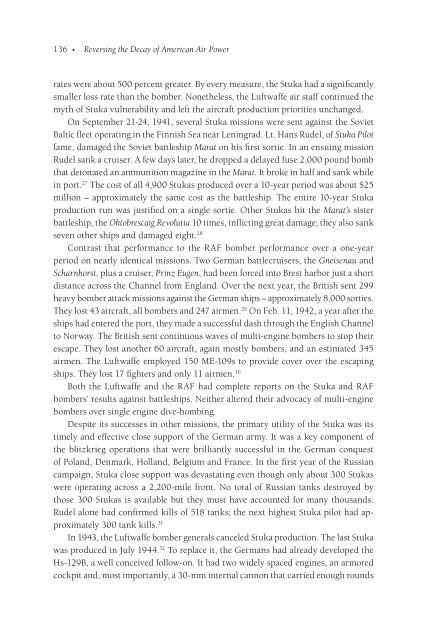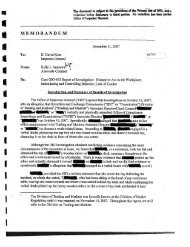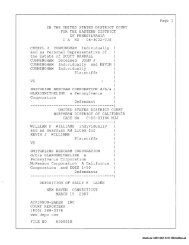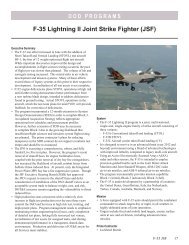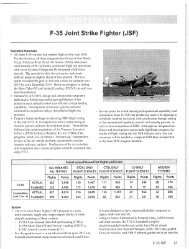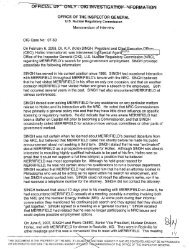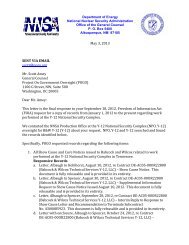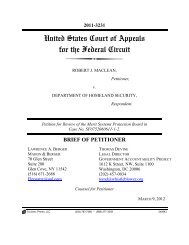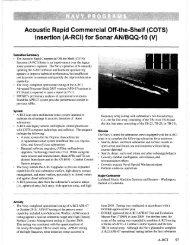Reversing the Decay of American Air Power
Reversing the Decay of American Air Power
Reversing the Decay of American Air Power
Create successful ePaper yourself
Turn your PDF publications into a flip-book with our unique Google optimized e-Paper software.
136 • <strong>Reversing</strong> <strong>the</strong> <strong>Decay</strong> <strong>of</strong> <strong>American</strong> <strong>Air</strong> <strong>Power</strong><br />
rates were about 500 percent greater. By every measure, <strong>the</strong> Stuka had a significantly<br />
smaller loss rate than <strong>the</strong> bomber. None<strong>the</strong>less, <strong>the</strong> Luftwaffe air staff continued <strong>the</strong><br />
myth <strong>of</strong> Stuka vulnerability and left <strong>the</strong> aircraft production priorities unchanged.<br />
On September 21-24, 1941, several Stuka missions were sent against <strong>the</strong> Soviet<br />
Baltic fleet operating in <strong>the</strong> Finnish Sea near Leningrad. Lt. Hans Rudel, <strong>of</strong> Stuka Pilot<br />
fame, damaged <strong>the</strong> Soviet battleship Marat on his first sortie. In an ensuing mission<br />
Rudel sank a cruiser. A few days later, he dropped a delayed fuse 2,000 pound bomb<br />
that detonated an ammunition magazine in <strong>the</strong> Marat. It broke in half and sank while<br />
in port. 27 The cost <strong>of</strong> all 4,900 Stukas produced over a 10-year period was about $25<br />
million – approximately <strong>the</strong> same cost as <strong>the</strong> battleship. The entire 10-year Stuka<br />
production run was justified on a single sortie. O<strong>the</strong>r Stukas hit <strong>the</strong> Marat’s sister<br />
battleship, <strong>the</strong> Oktobrescaig Revolutia 10 times, inflicting great damage; <strong>the</strong>y also sank<br />
seven o<strong>the</strong>r ships and damaged eight. 28<br />
Contrast that performance to <strong>the</strong> RAF bomber performance over a one-year<br />
period on nearly identical missions. Two German battlecruisers, <strong>the</strong> Gneisenau and<br />
Scharnhorst, plus a cruiser, Prinz Eugen, had been forced into Brest harbor just a short<br />
distance across <strong>the</strong> Channel from England. Over <strong>the</strong> next year, <strong>the</strong> British sent 299<br />
heavy bomber attack missions against <strong>the</strong> German ships – approximately 8,000 sorties.<br />
They lost 43 aircraft, all bombers and 247 airmen. 29 On Feb. 11, 1942, a year after <strong>the</strong><br />
ships had entered <strong>the</strong> port, <strong>the</strong>y made a successful dash through <strong>the</strong> English Channel<br />
to Norway. The British sent continuous waves <strong>of</strong> multi-engine bombers to stop <strong>the</strong>ir<br />
escape. They lost ano<strong>the</strong>r 60 aircraft, again mostly bombers, and an estimated 345<br />
airmen. The Luftwaffe employed 150 ME-109s to provide cover over <strong>the</strong> escaping<br />
ships. They lost 17 fighters and only 11 airmen. 30<br />
Both <strong>the</strong> Luftwaffe and <strong>the</strong> RAF had complete reports on <strong>the</strong> Stuka and RAF<br />
bombers’ results against battleships. Nei<strong>the</strong>r altered <strong>the</strong>ir advocacy <strong>of</strong> multi-engine<br />
bombers over single engine dive-bombing.<br />
Despite its successes in o<strong>the</strong>r missions, <strong>the</strong> primary utility <strong>of</strong> <strong>the</strong> Stuka was its<br />
timely and effective close support <strong>of</strong> <strong>the</strong> German army. It was a key component <strong>of</strong><br />
<strong>the</strong> blitzkrieg operations that were brilliantly successful in <strong>the</strong> German conquest<br />
<strong>of</strong> Poland, Denmark, Holland, Belgium and France. In <strong>the</strong> first year <strong>of</strong> <strong>the</strong> Russian<br />
campaign, Stuka close support was devastating even though only about 300 Stukas<br />
were operating across a 2,200-mile front. No total <strong>of</strong> Russian tanks destroyed by<br />
those 300 Stukas is available but <strong>the</strong>y must have accounted for many thousands.<br />
Rudel alone had confirmed kills <strong>of</strong> 518 tanks; <strong>the</strong> next highest Stuka pilot had approximately<br />
300 tank kills. 31<br />
In 1943, <strong>the</strong> Luftwaffe bomber generals canceled Stuka production. The last Stuka<br />
was produced in July 1944. 32 To replace it, <strong>the</strong> Germans had already developed <strong>the</strong><br />
Hs-129B, a well conceived follow-on. It had two widely spaced engines, an armored<br />
cockpit and, most importantly, a 30-mm internal cannon that carried enough rounds


